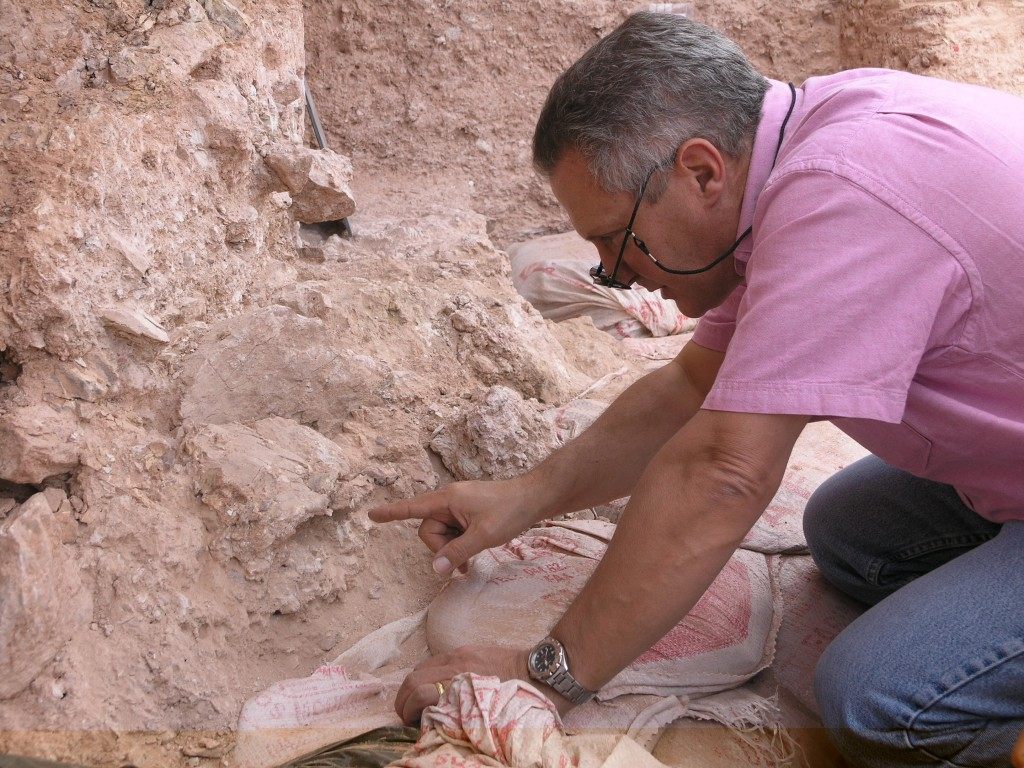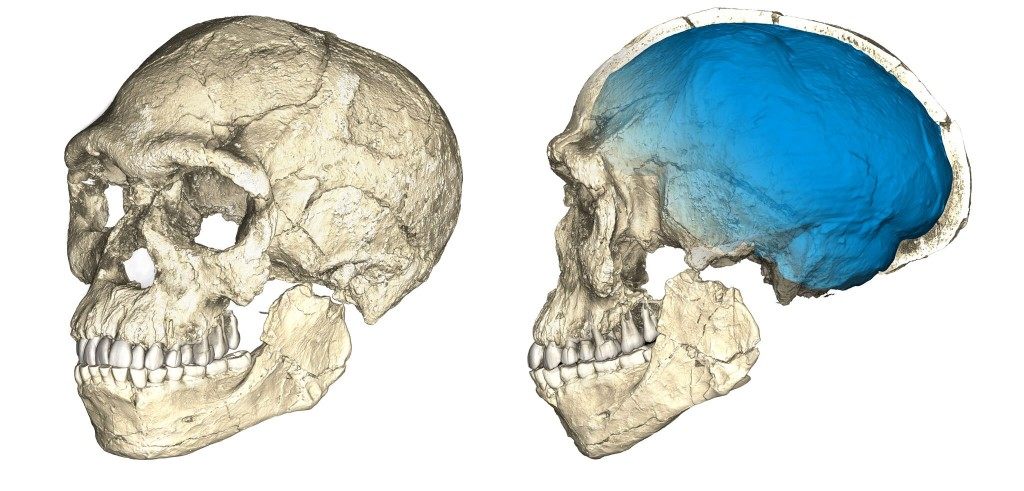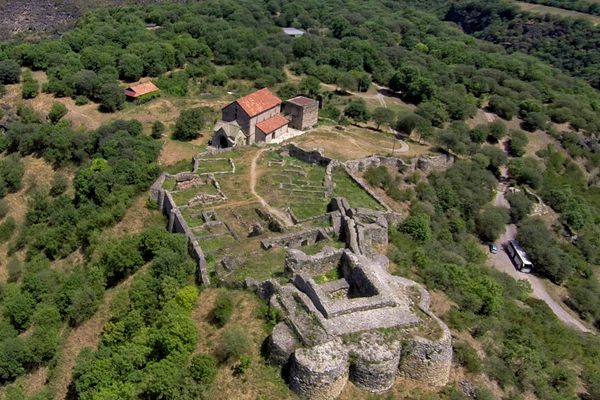The Oldest Known Homo Sapiens Fossils Now Come From North Africa
New finds are rewriting the story of our species.

In 1960, miners began digging for barite at Jebel Irhoud in Morocco. The site lies in Africa’s northwest corner, between the Atlantic Ocean and the arid Atlas Mountains, beyond which stretches the expansive, parched Sahara Desert. A year into the project, the miners found a prehistoric skull that looked somewhat human. They turned the find over to the mine’s medical doctor, who gave it to a professor at the University of Rabat. That was how scientists first learned of the prehistoric inhabitants of Jebel Irhoud. Today, based on a new fossils and dating from the same site, a group of scientists says that those inhabitants represent the earliest Homo sapiens remains ever discovered—dating to roughly 300,000 years ago.
Before this, the oldest H. sapiens fossils were found in East Africa and date to approximately 195,000 years ago. The new discovery, reported in two papers published in Nature, does not mean that the origin point of our species should be relocated to North Africa, scientists say, but that the way in which we understand human evolution and migration should change.
“It allows us to envision a more complex picture for the emergence of our species,” Jean-Jacques Hublin, the lead author of one Nature paper, told reporters. “We would support that notion that around 300,000 years ago very early forms of Homo sapiens were already dispersed all over Africa.”

After the first hominin remains were found at Jebel Irhoud in the 1960s, archaeologists discovered another braincase, the jawbone of a younger person, fragments of another jaw, and other remains, along with stone tools and fossilized animal bones. Originally, the artifacts were all thought to be about 40,000 years old and to have come from Neanderthals—who, at the time, were considered precursors to H. sapiens, a waypoint on our evolutionary timeline. Since then there has been a revolution in thinking about hominin evolution. Scientists now believe that Neanderthals were a separate lineage that shared some of our skills and cultural innovations and even interbred with us.
Hublin, a paleoanthropologist at the Max Planck Institute for Evolutionary Anthropology in Leipzig, Germany, spent his early career focused on Neanderthals and has been studying Jebel Irhoud for years. In 1987, he published a paper on an arm bone found there and argued that the bone shows traits suggesting an archaic H. sapiens individual. Over the following years, he continued to visit the site, but it wasn’t until the Max Planck Institute hired him in 2004 that he had the resources to start new excavations there.

Even after the 1960s discoveries, the site continued to be an active quarry for many years. The area where the fossils were found had once been a cave, but the roof had long since been blasted away. It took “ a lot of effort” to clean the site, Hublin told reporters, but the team had a stroke of very good luck: Despite all the quarrying that had been done there, part of the site had been preserved with its stratigraphy—the layers crucial to archaeological dating—intact. And more fossils, including another skull, were still embedded in the rock. “Very early in the process we realized the site was much older than anyone could imagine,” Hublin said. Using fragments of burnt flint found in the same layer as the newly found hominin fossils, the team dated the remains back 300,000 years.
Around that same time, about 330,000 years ago, the climate would have been in one of the stages in which the Sahara was much greener—a grassland running with rivers and dotted with lakes. At Jebel Irhoud, alongside the hominin fossils, the archaeologists found many fossilized gazelle bones, and they imagine that ancient humans might have followed these migratory animals across the grasslands to this corner of the continent.

In the new view of human evolution, all those thousands of years ago, many species of hominins, like us but distinct, overlapped in various places at various times. When archaeologists find hominin bones, they no longer try to fit them into a linear sequence that ends in the emergence of H. sapiens. We are, it seems, just the last “man” standing, and not the perfected form of a long line of “less evolved” ancestors.
It could be that the individuals represented by the Jebel Irhoud fossils belonged to one of these other lineages, but when Hublin and his colleagues analyzed the finds, they found unmistakable features put the skulls solidly within the realm of H. sapiens. Their facial features, for example, look more or less like ours, with our short faces and weak brows. The braincases of these skulls, however, are still elongated and not in the shorter, “globular” form that characterizes modern human skulls and makes room for our giant brains.

There’s some question about whether these ancient hominins should be called H. sapiens if they don’t resemble modern humans in every way, but the authors of the paper argue that they’re close enough to be considered part of our species. We don’t know how isolated this population of H. sapiens would have been from those in other parts of the continent, but it seems clear that our ancient relatives were exploring more of the world, and far earlier, than we ever imagined.














Follow us on Twitter to get the latest on the world's hidden wonders.
Like us on Facebook to get the latest on the world's hidden wonders.
Follow us on Twitter Like us on Facebook